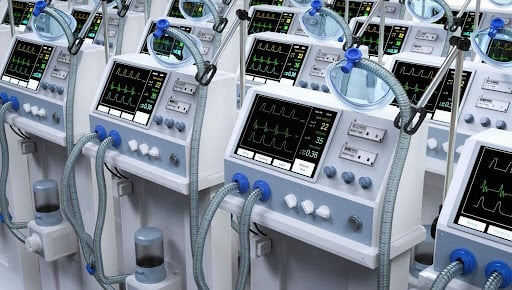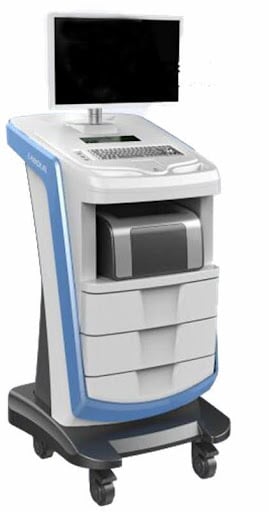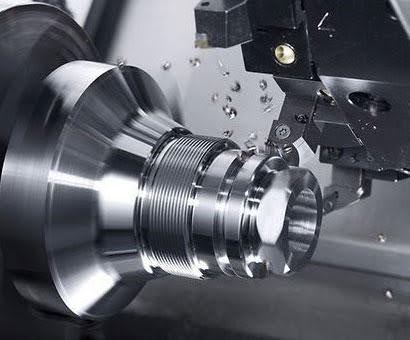Medical equipment manufacturing demands high precision due to the complex nature of the devices and the critical role they play in patient care. This can only be done through advanced techniques like medical device's rapid prototyping that allow engineers and designers to explore complex geometries and different materials for the manufacturing of medical equipment.
The selection of materials is a fundamental step in the whole process. Here, you will decide the quality of the prototype and its suitability for simulating the performance of the final product. Plastics and metals are the most common materials used in medical devices' rapid prototyping.
In today's article, we are going to show the common materials that are used in medical devices' rapid prototyping, diving deep into some technical details that will help you determine the most suitable material for your demands.

Considerations for Material Selection in Medical Device's Rapid Prototyping
In order to choose the best material for the medical device's rapid prototyping, you need to check the different qualities of these materials and then compare them with the intended cases. Here are some parameters that need to be checked:
1. Chemical Properties
Materials used in medical devices are usually exposed to different chemicals, including those used in pharmaceuticals, sterilization agents, and biological fluids. That is why you need to see if the material used in medical device's rapid prototyping will not degrade or react unpredictably with these substances.
2. Physical Resistance
Medical devices usually face demanding physical conditions like stress, abrasion, and extreme temperatures. So, you need to select materials that can resist these physical conditions without failing.
3. Drug compatibility
Some medical equipment like infusion pumps and drug delivery systems come in direct contact with drugs.
This means that such devices should never be made of materials that alter the chemical composition of the drugs, which can otherwise have adverse reactions. Not to mention that the materials should also avoid absorbing drugs or allow them to adhere to the device unduly.
4. Comfort in Use
Medical device's rapid prototyping is also used in devices that patients need to wear or be implanted with. That is why the material used in such devices should be hypoallergenic, non-irritating, and have a favorable texture and flexibility to minimize discomfort during long uses.
Features and Applications of Common Materials
Considering all the factors that would influence the choice of material, here are different materials that are widely used in medical device's rapid prototyping.
Metal
There are different types of metals that are widely used in medical device's rapid prototyping, including Stainless Steel, Titanium, and Aluminum.
- stainless steel
Stainless steel is a common and durable metal that is applied in medical devices' rapid prototyping. That's because it often has excellent corrosion resistance, which makes them suitable for surgical instruments, orthopedic pins, and screws due to their durability and the ability to undergo sterilization processes without degrading.
- Titanium
Titanium is used for its superior strength-to-weight ratio and exceptional biocompatibility, which makes it ideal for body implants such as joint replacements and dental implants. Plus, titanium's non-reactive nature ensures that it does not trigger negative body reactions, which is a critical factor to consider while choosing a medical device's rapid prototyping material.
- Aluminum
Then comes aluminum, which is a lightweight material that resists corrosion. You will find its applications in the medical parts manufacturing of crutches, hospital bed frames, and even surgical instruments. Its ease of machining also makes it suitable for customized medical tools.
Plastics
Different types of plastics are also widely used in the rapid prototyping of medical devices. For example, Polyether Ether Ketone (PEEK) is suitable for advanced implantable devices due to its chemical resistance.
Similarly, Polycarbonate (PC) is a thermoplastic polymer that makes durable medical housings.
Another famous plastic, Polypropylene, is used industry-wide for products that have to undergo sterilization.

KAIAO's Medical Equipment Rapid Prototyping Services
As one of the best CNC machining manufacturing companies in the market, KAIAO provides medical device's rapid prototyping services to top global brands. Here's why:
- KAIAO is known in the realm of medical devices' rapid prototyping, making various prototypes such as monitors, prosthetics, fitness trackers, medical enclosures, drug delivery devices, ventilator parts, and more.
- KAIAO can handle all this while keeping your accuracyt customized needs in mind. They can provide expert guidance and in-depth requirement analysis to understand clients' specific needs for medical device's rapid prototyping. Utilizing advanced manufacturing techniques, like plastic injection moldingalong with high-precision CNC machining, KIAAO can consistently deliver what you want.
- KAIAO's facilities are certified to ISO 9001:2015, ISO 13485, and AS9100D, which speaks volumes about their commitment to quality assurance and quality control in every medical device's rapid prototyping project they take.

Conclusion
Before starting to hand in your medical device's rapid prototyping demand, you should understand the features and applications of common materials. For gaining precise medical devices' rapid prototyping services, KAIAO would not let you down. They have been leading the rapid prototyping industry since its inception in 1995. With a 3000 m2 factory, KAIAO makes every idea a success. If you are interested, please visit KAIAO's official website to learn more and contact them!
Interesting Related Article: “Optimizing Medical Practice Operations”









